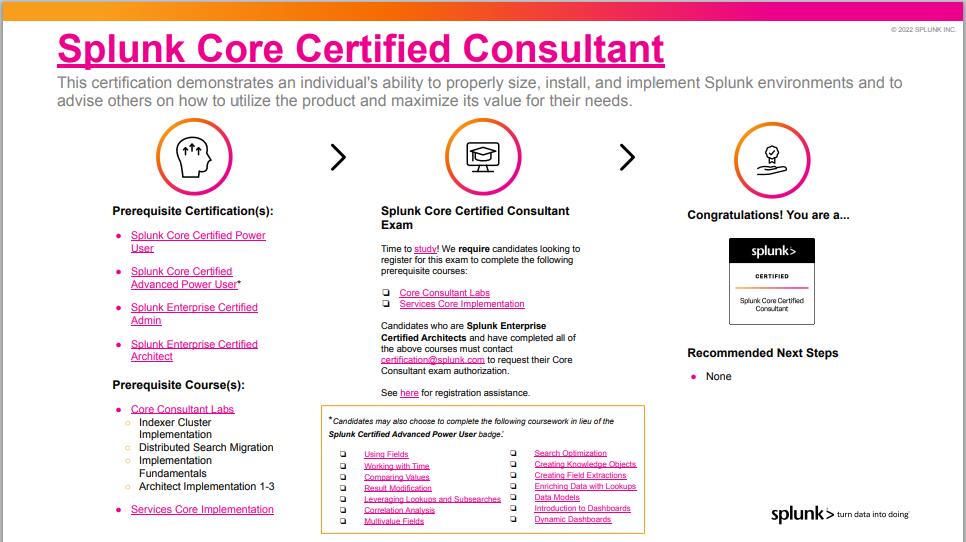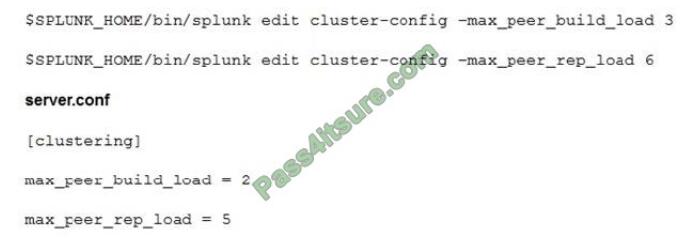Trust us, we have updated the Splunk SPLK-3003 dumps, which will be good study material for you to beat the Splunk Core Certified Consultant exam.
How to get Splunk Core Certified Consultant study materials – SPLK-3003 dumps? Go to the page to download valid SPLK-3003 study materials: https://www.pass4itsure.com/splk-3003.html Updated SPLK-3003 dumps contain the latest exam practice questions and answers to help you prepare for the Splunk Core Certified Consultant exam.
Why are the Pass4itSure SPLK-3003 dumps a valid learning material?
Because the SPLK-3003 dump is carefully selected by professionals based on real exams to sort out the most effective exam questions and answers, and share solution ideas, this is the most effective material for preparing for the Splunk Core Certified Consultant exam.
It is available in two formats to choose from (PDF or VCE).
Going back to the exam, what should you know about the SPLK-3003 exam?
The key knowledge points of the Splunk Core Certified Consultant SPLK-3003 exam are summarized below:
Full name: Splunk Core Certified Consultant
Abbreviation: SPLK-3003
Certification: Splunk Certifications
Requirements: Thorough understanding of Splunk deployment methodology and implementation in large Splunk installations, and expert-level knowledge of multi-tier Splunk architecture, clustering, and scalability topics.
Prerequisite Certification(s):
● Splunk Core Certified Power User
● Splunk Core Certified Advanced Power User
● Splunk Enterprise Certified Admin
● Splunk Enterprise Certified Architect
Prerequisite Course(s):
● Core Consultant Labs
● Services: Core Implementation

Free SPLK-3003 dumps valid exam questions and answers:
QUESTION # 1
The data in Splunk is now subject to auditing and compliance controls. A customer would like to ensure that at least one year of logs is retained for both Windows and Firewall events. What data retention controls must be configured?
A. maxTotalDataSizeMB and frozenTimePeriodInSecs
B. coldToFrozenDir and coldToFrozenScript
C. Splunk Volume and maxTotalDataSizMB
D. Splunk Volume and frozenTimePeriodInSecs
Correct Answer: A
Reference: https://docs.splunk.com/Documentation/Splunk/8.1.0/Indexer/Setaretirementandarchivingpolicy
QUESTION # 2
A customer has a number of inefficient regex replacement transforms being applied. When under heavy load the indexers are struggling to maintain the expected indexing rate. In a worst-case scenario, which queue(s) would be expected to fill up?
A. Typing, merging, parsing, input
B. Parsing
C. Typing
D. Indexing, typing, merging, parsing, input
Correct Answer: B
QUESTION # 3
What happens when an index cluster peer freezes a bucket?
A. All indexers with a copy of the bucket will delete it.
B. The cluster master will ensure another copy of the bucket is made on the other peers to meet the replication settings.
C. The cluster master will no longer perform fix-up activities for the bucket.
D. All indexers with a copy of the bucket will immediately roll it to freeze.
Correct Answer: C
Reference: https://docs.splunk.com/Documentation/Splunk/8.1.0/Indexer/Bucketsandclusters
QUESTION # 4
Report acceleration has been enabled for a specific use case. In which bucket location is the corresponding CSV file located?
A. thawed patch
B. summaryHomePath
C. tstatsHomePath
D. homeopath, coldPath
Correct Answer: B
Reference: https://docs.splunk.com/Documentation/Splunk/8.1.0/Knowledge/ Manageacceleratedsearchsummaries
QUESTION # 5
Which command is most efficient in finding the pass4SymmKey of an index cluster?
A. find / -name server.conf -print | grep pass4SymKey
B. $SPLUNK_HOME/bin/splunk search | rest splunk_server=local /servicesNS/-/unhash_app/storage/ passwords
C. $SPLUNK_HOME/bin/splunk btool server list clustering | grep pass4SymmKey
D. $SPLUNK_HOME/bin/splunk btool clustering list clustering –debug | grep pass4SymmKey
Correct Answer: D
QUESTION # 6
Which of the following statements is true, as it pertains to search head clustering (SHC)?
A. SHC is supported on AIX, Linux, and Windows operating systems.
B. Maximum number of nodes for an SHC is 10.
C. SHC members must run on the same hardware specifications.
D. Minimum number of nodes for an SHC is 5.
Correct Answer: B
QUESTION # 7
In a single indexer cluster, where should the Monitoring Console (MC) be installed?
A. Deployer sharing with the master cluster.
B. License master that has 50 clients or more.
C. Cluster master node
D. Production Search Head
Correct Answer: C
Reference: https://docs.splunk.com/Documentation/Splunk/8.1.0/DMC/WheretohostDMC
QUESTION # 8
How does Monitoring Console (MC) initially identify the server role(s) of a new Splunk Instance?
A. The MC uses a REST endpoint to query the server.
B. Roles are manually assigned within the MC.
C. Roles are read from distsearch.conf.
D. The MC assigns all possible roles by default.
Correct Answer: C
QUESTION # 9
Which configuration item should be set to false to significantly improve data ingestion performance?
A. AUTO_KV_JSON
B. BREAK_ONLY_BEFORE_DATE
C. SHOULD_LINEMERGE
D. ANNOTATE_PUNCT
Correct Answer: C
Reference: https://docs.splunk.com/Documentation/Splunk/8.0.6/Data/Configureeventlinebreaking
QUESTION # 10
What is the default push mode for a search head cluster deployer app configuration bundle?
A. full
B. merge_to_default
C. default_only
D. local_only
Correct Answer: B
QUESTION # 11
What should be considered when running the following CLI commands with the goal of accelerating an index cluster migration to new hardware?

A. Data ingestion rate
B. Network latency and storage IOPS
C. Distance and location
D. SSL data encryption
Correct Answer: B
QUESTION # 12
A customer has downloaded the Splunk App for AWS from Splunkbase and installed it in a search head cluster following the instructions using the deployer. A power user modifies a dashboard in the app on one of the search head cluster members.
The app containing an updated dashboard is upgraded to the latest version by following the instructions via the deployer. What happens?
A. The updated dashboard will not be deployed globally to all users, due to the conflict with the power user\’s modified version of the dashboard.
B. Applying the search head cluster bundle will fail due to the conflict.
C. The updated dashboard will be available to the power user.
D. The updated dashboard will not be available to the power user; they will see their modified version.
Correct Answer: A
QUESTION # 13
The universal forwarder (UF) should be used whenever possible, as it is smaller and more efficient. In which of the following scenarios would a heavy forwarder (HF) be a more appropriate choice?
A. When a predictable version of Python is required.
B. When filtering 10% – 5% of incoming events.
C. When monitoring a log file.
D. When running a script.
Correct Answer: B
Reference: https://www.splunk.com/en_us/blog/tips-and-tricks/universal-or-heavy-that-is-the-question.html
SPLK-3003 exam dumps questions 1-13 free download – drive https://drive.google.com/file/d/189aUl0vWHg5dgpFbQzKiQlRGDYqb9QHB/view?usp=sharing
For more SPLK-3003 exam questions, please visit this website.
